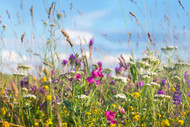Spring is finally here and it’s time to start planning and planting! Top trends for 2023 are focusing on working with nature, utilizing space, and bold colors. As the world is becoming more aware that what worked in the past no longer works for now (and for the future), gardeners are shifting to plants and processes that work in concert with their locale. Here are a few of the major trends for 2023.

Japanese Garden Tools Vs. American: What’s the Difference?
You may have seen Japanese gardening tools popping up more in stores and online. Sure, they’re… Read More


